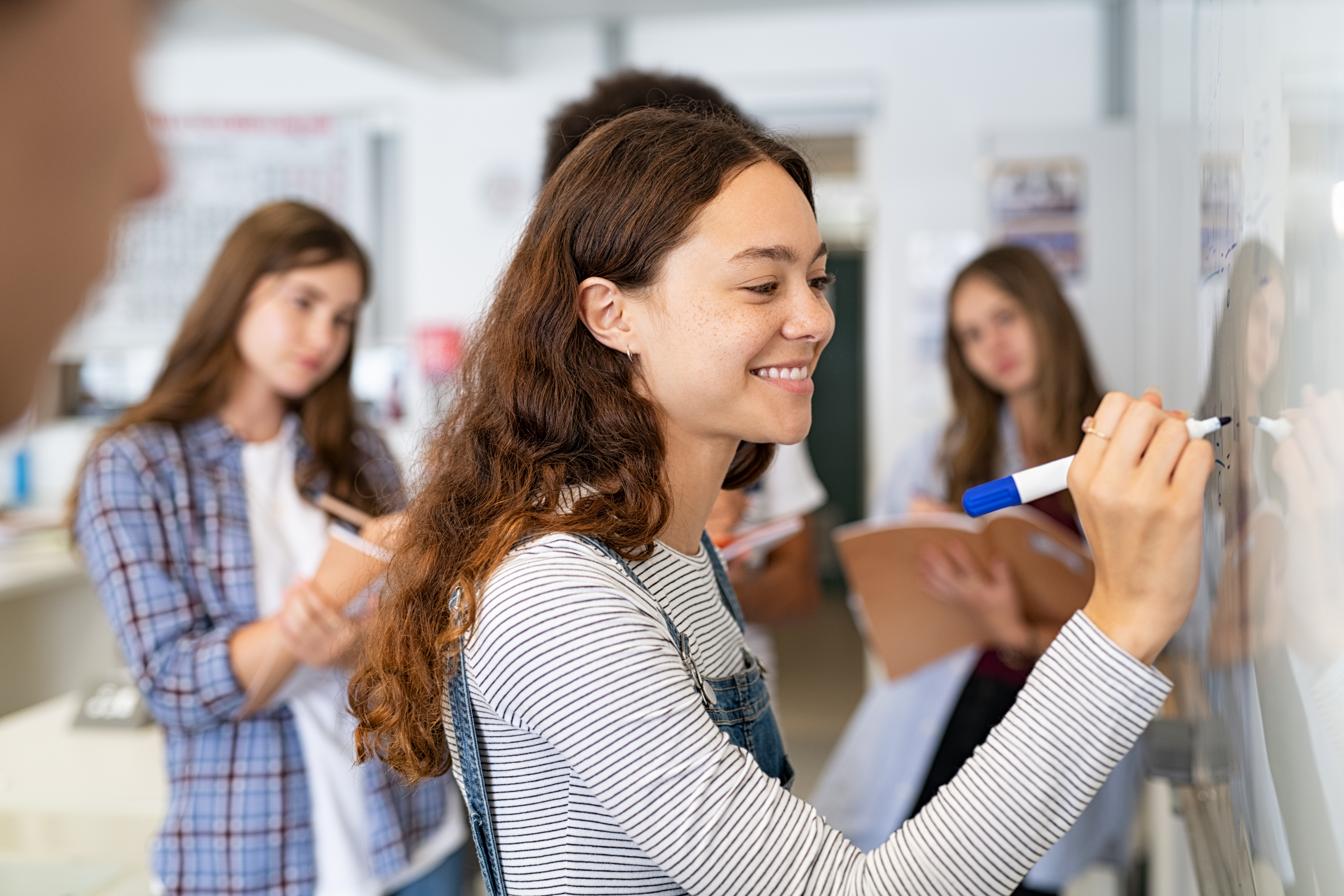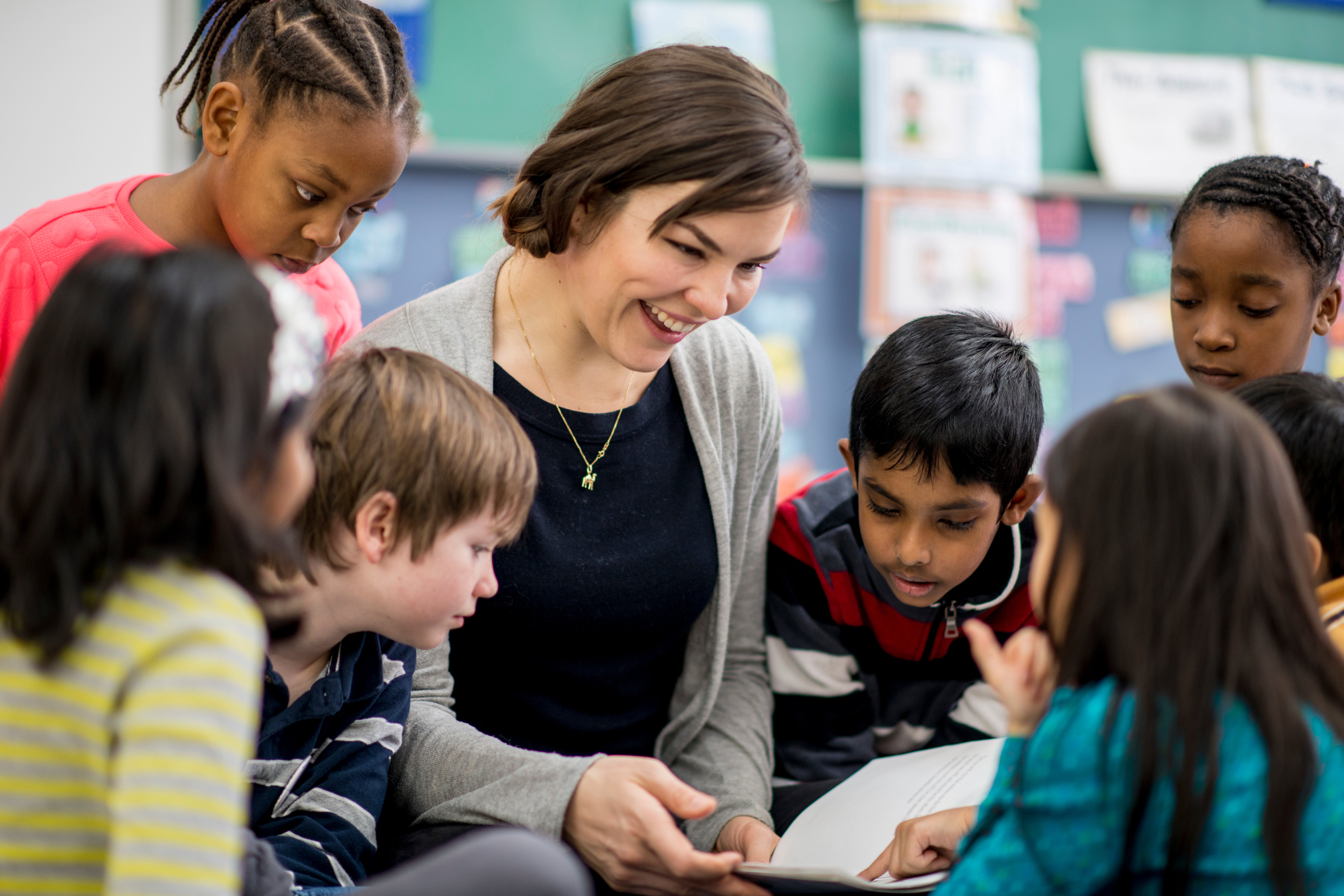The first few weeks of school are a powerful opportunity to lay the foundation for a connected, successful year. But re-engaging students after summer break isn’t always straightforward. Many return feeling disconnected from learning, unsure of their place in the classroom, or hesitant to jump back in. Without a purposeful plan to reignite their curiosity, it’s easy for disengagement to take root early.
This guide offers practical, research-informed strategies to help you spark student interest from day one, strengthen relationships, and build a learning environment where engagement and momentum can thrive all year long.
What Is Student Engagement?
Student engagement is more than just showing up and completing assignments. It’s the attention, curiosity, and participation students bring to learning—reflected in their behavior, emotions, and thinking in the classroom. Engaged students ask questions, connect new ideas to what they already know, and contribute actively to class discussions. You can see it in their posture, hear it in their insights, and feel it in the energy of the room.
To understand how engaged students really are, teachers and school staff often use student surveys with questions such as:
- How excited are you about going to this class?
- In class, how eager are you to participate?
- When you’re not in class, how often do you talk about ideas from class?
- How often do you get so focused on class activities that you lose track of time?
These types of questions give educators insight that goes beyond academic data. They reveal how invested students feel in their learning—information that’s critical for creating classrooms where all students feel connected, motivated, and ready to succeed.
Why Is Student Engagement Important After Extended Breaks?
Re-engaging students after a long break is about more than fighting off the summer slide—it’s a crucial opportunity to build momentum that lasts all year. The first few weeks back are when foundational habits form, relationships are rebuilt, and students rediscover their sense of purpose in the classroom. Teachers who focus on engagement early can prevent challenges that often snowball into larger issues later in the year. Here's why early engagement is so critical:
- Early Success Sets the Tone: How students begin the year has ripple effects. Research shows that about 50% of students who miss just 2–4 days in September go on to miss a month or more of school—placing them at greater risk for chronic absenteeism. Creating early wins in the classroom helps build routines, confidence, and a reason to keep showing up.
- Relationships Need Rebuilding: After extended time away, students must reconnect with their teachers and peers. These relationships are more than just nice to have—they’re critical for academic success and long-term outcomes. Studies show that strong school connections support better grades, stronger life skills, and even higher rates of future employment.
- Skills Get Rusty: Academic and organizational skills can fade over the summer, especially for students who didn’t have access to enriching learning opportunities. This "summer learning loss" can add up: some studies estimate students lose 25–34% of the previous year’s academic gains over just one summer. Early engagement can help reignite those skills and rebuild learning habits.
- Engagement Drives Success: When students feel excited about learning, everything changes. They attend more regularly, participate more fully, and are better able to manage behavior and emotions in class. One Gallup study found that students in grades 5–12 who feel engaged in school are 2.5 times more likely to say they’re doing well academically—and 4.5 times more likely to feel hopeful about their future.
8 Ways To Boost School Engagement When Coming Back to School
A highly engaged classroom doesn’t happen by chance, it’s built through intentional teaching practices and learning experiences that invite students to participate, think deeply, and connect meaningfully with the content. The strongest growth happens when educators strike the right balance: offering activities that both build students’ confidence and push them to stretch their thinking.
1. Start with Relationship Building
On the first day, carve out time to build relationships and create a welcoming environment where students feel seen and heard. Greet each student by name as they enter the classroom. Once everyone is settled, invite them to share one thing they’re excited about this year. Then, encourage them to move around the room and find classmates with similar interests.
As the day wraps up, ask each student to write down one question they have about the upcoming school year. These simple yet powerful activities help students discover common ground, ease first-day nerves, and signal from the very beginning that their voices and experiences matter in your classroom.
2. Connect Learning to Student Interests
On the first day, invite students to complete a short survey about their hobbies, favorite subjects, and summer experiences. Ask what they’re curious about or excited to learn this year, and write their ideas on the board. These small moments of listening can go a long way.
As the year progresses, look for opportunities to weave students’ interests into your lessons—whether it’s using their favorite activities in math problems, referencing their passions in reading selections, or designing science experiments around topics they care about. When students see themselves reflected in the content, they’re more likely to stay engaged and take ownership of their learning.
3. Use Interactive Teaching Methods
Active participation helps students stay focused and retain what they’re learning. Build movement and discussion into your lessons by encouraging students to physically move to different areas of the room to share their opinions or ideas. Instead of calling on individuals in front of the whole class, use strategies like think-pair-share to give everyone a chance to process and participate.
Break up direct instruction with quick partner discussions every 10 minutes, and offer hands-on materials—like whiteboards, sticky notes, or art supplies—to keep students engaged. These simple, low-lift techniques help maintain both physical and mental energy, making it easier for students to stay present and absorb new information.
4. Set Clear but Flexible Expectations
On day one, post your classroom expectations where students can see them and take time to explain why each one supports a positive learning environment. When students understand the “why” behind the rules, they’re more likely to buy in and contribute to a respectful, focused classroom.
Ease students back into academic routines by starting with shorter assignments and gradually increasing the complexity and length. Reinforce the message that learning includes making mistakes—and that those mistakes are part of the process. Keep an eye out for students who seem overwhelmed, and check in to offer support. A consistent structure that balances high expectations with room to grow helps students feel safe, confident, and ready to engage.
5. Provide Choice and Voice
When students have opportunities to make choices in their learning, they’re more likely to stay engaged and take ownership. Offer multiple ways for students to demonstrate their understanding—through writing, presentations, art, or discussion—and invite them to choose classroom roles that match their strengths and interests.
You can also build autonomy through small, meaningful decisions: let students choose their seating when appropriate, decide how to organize their materials, or vote on class activities. To keep a pulse on how things are going, use simple check-ins like “Rose, Bud, Thorn” to help students reflect on what’s going well, what they’re looking forward to, and what challenges they’re facing. These strategies not only boost engagement; they help foster a classroom culture where every student feels seen, heard, and valued.
6. Celebrate Small Wins
Recognizing students for their effort, not just their outcomes, helps build a culture of persistence and pride. Acknowledge when students try hard, even if they don’t get the answer right. Specific praise goes further than general encouragement. Instead of saying, “Good job,” try: “You listened carefully to your partner and built on their idea”—this reinforces the behaviors you want to see.
Look for opportunities to celebrate students beyond the classroom. Call families to share positive updates about student progress, successful projects, or academic growth. Create a bulletin board that showcases achievements of all kinds, from academic milestones to acts of kindness. When students feel seen and valued for their growth, they’re more likely to stay motivated and engaged.
7. Create Collaborative Learning Opportunities
Students learn best when they learn with and from each other. During group work, assign clear roles so that every student has a meaningful part to play. Rotate partners regularly to encourage collaboration across the classroom and help students build new connections.
Create opportunities for students to share their strengths by teaching skills they’ve mastered or contributing their unique talents to group projects. Peer tutoring is another powerful way to deepen learning and build community: students can support one another with challenging concepts while developing empathy, communication skills, and friendships. When classrooms are built on collaboration, every student has a chance to shine and grow.
8. Incorporate Technology Purposefully
Technology can be a powerful tool for engagement when used intentionally. Invite students to create short videos explaining concepts to younger peers, or use real-time tools like online polls or interactive quizzes to check for understanding during lessons. These strategies encourage active participation and help students make deeper connections with the material.
Support student growth by helping them build digital portfolios where they can reflect on their learning and track progress over time. To ensure technology enhances rather than distracts from learning, set clear, consistent expectations about when and how devices should be used in the classroom. When students understand the purpose behind the tech, they’re more likely to use it responsibly—and more effectively.
7 Benefits of High Student Engagement
Boosting student engagement does more than make the classroom feel energetic—it leads to stronger academic outcomes, better relationships, and life skills that extend far beyond the school years. When students feel connected to their learning, they show up, lean in, and grow.
Here are eight key advantages of a highly engaged classroom:
1. Faster Return to Learning
Engaged students quickly regain momentum after school breaks. Instead of spending weeks catching up, they jump right into rigorous material—motivated, focused, and ready to participate.
2. Better Attendance
Engagement and attendance go hand in hand. When students feel excited about the content and connected to their classmates, they’re more likely to show up. Compelling projects and relevant lessons give them something to look forward to each day.
3. Higher Academic Achievement
Engaged students are more likely to earn higher test scores and make steady progress toward their learning goals. They complete work more thoughtfully, participate more actively, and persist through challenges. Research shows this positive link between engagement and achievement across all grade levels and student populations.
4. Stronger Teacher-Student Relationships
Interactive learning opens the door to deeper relationships. Teachers get to know students’ strengths, interests, and challenges, while students feel safe sharing their ideas and asking questions. This mutual trust supports learning all year long.
5. Increased Student Confidence
Meaningful participation builds confidence. When students see their ideas valued and experience success in class, they’re more willing to take risks, try challenging tasks, and recover from mistakes with resilience.
6. A More Positive School Climate
Engagement creates a ripple effect across the school. Students who feel valued and successful in one class bring that positive energy into their other classes, peer relationships, and school-wide culture—contributing to a more connected, inclusive environment.
7. Lifelong Learning Skills
When students are truly engaged, they develop study habits and mindsets that extend beyond the classroom. They learn to ask questions, seek out resources, and face new challenges with curiosity—foundational skills that prepare them for success in college, career, and life.
Common Student Engagement Challenges After Breaks
Even the most passionate, experienced teachers can find the back-to-school transition challenging—especially after a long break like summer. Knowing what to expect helps you plan with purpose, creating a smoother start for both you and your students.
Here are some common challenges to watch for in those first few weeks:
1. Summer Learning Loss
Many students return with noticeable gaps in academic skills. They may have forgotten multiplication facts, reading strategies, or key concepts in science or history. This can leave students feeling frustrated and make new material feel disconnected. Build in time for review, and start the year by reinforcing foundational concepts before moving into more complex work.
2. Broken Learning Routines
Time away from the classroom often leads to lost habits. Students may struggle with organizing materials, following multi-step instructions, or working independently for longer stretches. Plan to re-teach basic routines and allow time for students to rebuild these essential skills. Patience and consistency will pay off.
3. Social Hesitation
After weeks away from peers and teachers, many students feel unsure about reconnecting. They might be quiet in discussions or unsure how to approach group work. Offer plenty of low-pressure opportunities for students to talk, collaborate, and rebuild their comfort before jumping into more complex social interactions.
4. Technology Distractions
After a summer of screen time—whether from video games, social media, or streaming—it can be hard for students to adjust to the focus and pacing of in-person learning. You may notice shorter attention spans and restlessness. Ease the transition by starting with shorter work blocks, integrating movement breaks, and gradually increasing focus time.
5. Different Break Experiences
Not every student’s summer looked the same. Some may have traveled, taken part in structured camps, or had plenty of family support while others had less routine or enrichment. Take time to learn about each student’s experience and use that as a bridge to build connection and engagement in the classroom.
6. Teacher Adjustment Period
You need time too. Reconnecting with students, assessing academic needs, and reestablishing classroom dynamics takes intentional effort. Give yourself space to reorient before diving into heavy content. Focus on relationships, routines, and rhythm and trust that the academics will follow.
7. Competing Priorities
Students may still be mentally on summer break, thinking about recent adventures or missing the freedom of unstructured days. Rather than resisting this, acknowledge it. Find ways to tie lessons to their summer interests or let them share highlights as part of classroom activities. This can help ease the transition and make learning feel more relevant from day one.
Start the Year Strong by Listening to Students
Rebuilding engagement after a break starts with understanding what your students need. Panorama’s Student Survey helps educators gather insights on how students feel about their learning, motivation, and classroom experience, so you can tailor your strategies and spark participation from day one.
The comprehensive survey covers nineteen key topics—including student engagement, growth mindset, school climate, and perceptions of teaching and learning. Thousands of educators have used Panorama’s Student Survey as a formative tool to reflect on practice, measure the impact of new strategies, and better understand what’s working for their students. District leaders also use the survey to inform professional development and strengthen educator support systems—ensuring that every student’s voice helps shape a more engaging and effective learning experience.







.webp?width=478&height=557&name=panorama_student_survey-1%20(1).webp)